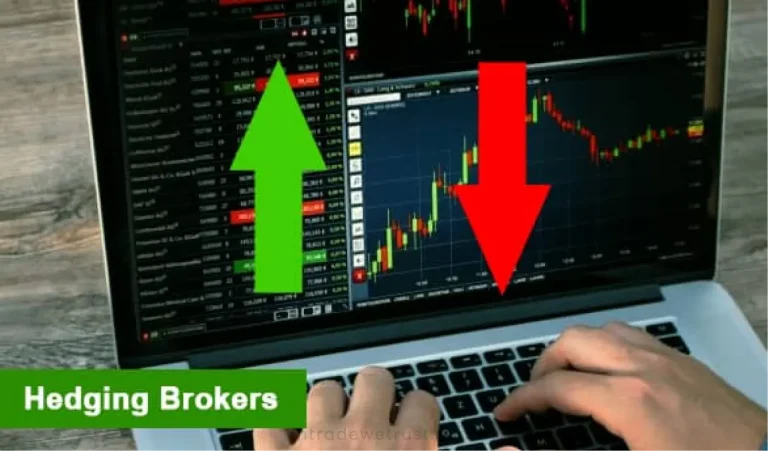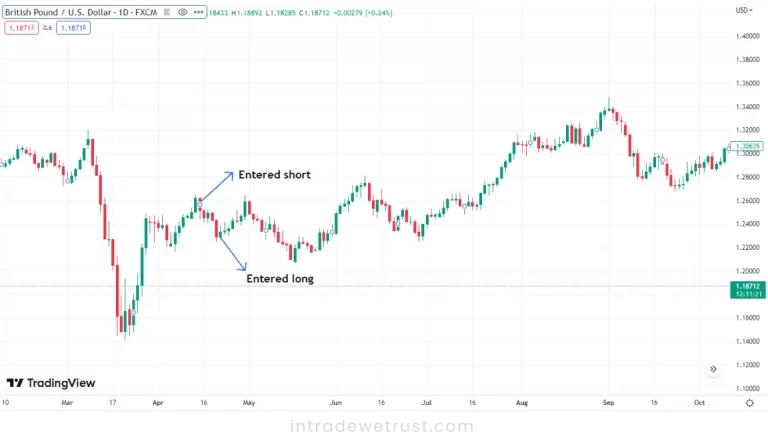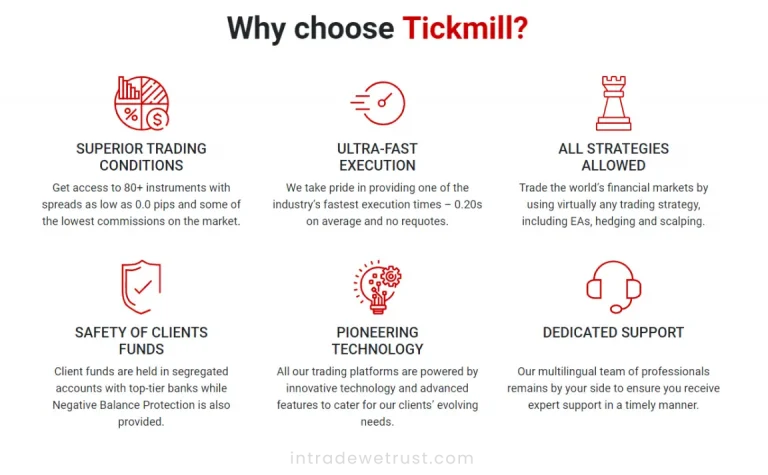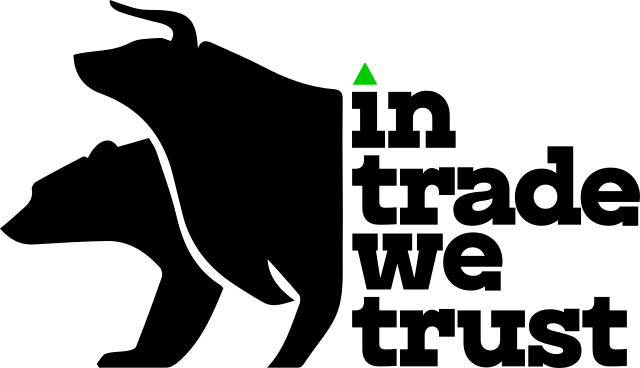Broker reviews > Trading > How to Choose the Best Forex Brokers that Allow Hedging in 2024
Hedging is a trading strategy that involves taking offsetting positions in the same or similar assets. It can be used to reduce risk or to speculate on the direction of the market.
In the foreign exchange (FX) market, hedging is often used to protect against currency fluctuations. For example, a company that exports goods may hedge its exposure to a foreign currency by buying a currency option. This will protect the company from losses if the value of the foreign currency falls.
Hedging can also be used to speculate on the direction of the market. For example, a trader may hedge their long position in a currency by selling a short-term future contract. This will protect the trader from losses if the value of the currency falls, but it will also limit their potential profits if the value of the currency rises.
Not all forex brokers allow hedging. Some brokers, particularly those that are regulated in the United States, restrict or prohibit hedging. This is because hedging can be seen as a form of speculation, which is often not allowed by US regulators.

If you are considering hedging in the forex market, it is important to choose a broker that allows it. Here are some tips on how to choose the best forex brokers that allow hedging in 2024:
Consider your trading goals
Before you start looking for a broker, you need to consider your trading goals. Are you looking to hedge your exposure to currency fluctuations, or are you looking to speculate on the direction of the market?
Once you know your goals, you can start to narrow down your search to brokers that offer the hedging options you need.
Look for a regulated broker
Regulation is important for any type of trading, but it’s especially important for hedging. Hedging can be a complex trading strategy, so it’s important to choose a broker that is regulated by a reputable financial authority.
Compare spreads and commissions
Spreads and commissions are the fees that you’ll pay to the broker for each trade that you make. Hedging can involve making a lot of trades, so it’s important to compare spreads and commissions before you choose a broker.
Look for a broker with a good trading platform
The trading platform is the software that you’ll use to place trades and manage your account. It’s important to choose a platform that is easy to use and understand, and that offers the features you need to hedge effectively.
Consider the broker’s customer support
Hedging can be a complex trading strategy. It’s important to choose a broker with good customer support that is available to help you when you need it.
Table of Key Factors to Consider When Choosing a Forex Broker that Allows Hedging
Factor | Description |
Trading goals | What are you trying to achieve by hedging? |
Regulation | Look for a broker that is regulated by a reputable financial authority. |
Spreads and commissions | Compare spreads and commissions before you choose a broker. |
Trading platform | Choose a platform that is easy to use and understand. |
Customer support | Choose a broker with good customer support. |
Additional tips
- Start with a small amount of money
When you’re first starting out with hedging, it’s a good idea to start with a small amount of money. This will help you to limit your losses if something goes wrong.
- Be patient
It takes time to learn how to hedge effectively. Don’t expect to become a millionaire overnight.
- Do your own research
Even if you’re following a hedging strategy, it’s important to do your own research before you make any trades. This will help you to make informed decisions and reduce your risk.

By following these tips, you can increase your chances of finding the best forex brokers that allow hedging in 2024.
Here are some additional factors that you may want to consider when choosing a forex broker that allows hedging:
- The broker’s leverage
Leverage is a tool that can magnify your profits or losses. Hedging can be a risky trading style, so it’s important to use leverage carefully.
- The broker’s educational resources
Hedging can be a complex trading style. It’s important to choose a broker that offers educational resources to help you learn how to hedge effectively.
Choosing the best forex hedging strategy in 2024 involves a nuanced approach, considering various factors like flexibility, cost, currency pairs involved, and risk tolerance. Hedging in forex is a strategic method to offset potential losses due to market fluctuations. It is crucial to understand that no one-size-fits-all strategy exists, and traders may need to experiment with different strategies to find the most suitable one.
Key Considerations for Selecting a Hedging Strategy:
- Flexibility: Options trading, as part of hedging, provides flexibility, allowing traders to establish a worst-case scenario and participate in favorable currency movements without the obligation of a forward contract. This is particularly beneficial when cash flows are uncertain.
- Currency Pairs Involved: The choice of hedging strategy can be influenced by the currency pairs involved, as some strategies may work better with certain pairs based on their liquidity and volatility.
- Cost of Hedging: The costs, including transaction fees and spreads, are an essential factor. Hedging can be expensive, and these costs must be weighed against the potential benefits.
- Risk Tolerance: Each trader’s risk tolerance should guide the choice of hedging strategy. More conservative strategies offer greater protection but may have lower potential for gains, whereas aggressive strategies might offer higher potential returns at increased risk.
- Implementation of Strategy: Setting up a dedicated hedging account, calculating the appropriate hedging ratio, and effectively placing and monitoring hedging trades are crucial steps. It’s important to note that hedging can be complex and involves significant risk, so it’s vital to understand the intricacies before implementation.
- Strategy Types: There are various hedging strategies, such as using forex options, forward contracts, or cross currency swaps. Each has its own set of advantages and complexities. For instance, forex options offer flexibility and no credit requirement but come at a premium cost. Forward contracts provide an obligation to purchase the asset, offering less flexibility but potentially less risk. Cross currency swaps, meanwhile, are useful for hedging interest rate risks in addition to currency risks.
- Diversification: Diversifying your investment across multiple trades can reduce the risk of significant losses, though it may also limit maximum gains.
Advantages and Disadvantages:
Advantages:
- Risk reduction.
- Flexibility in strategy selection.
- Ability to hedge against currency and interest rate risks.
Disadvantages:
- Can be complex and costly.
- No guarantee of eliminating risk entirely.
- Requires careful monitoring and adjustments.
In conclusion, choosing the right forex hedging strategy in 2024 will depend on individual trading objectives, risk tolerance, and market understanding. It’s essential to conduct thorough research and seek professional advice if necessary. Hedging can be an effective risk management tool but requires a nuanced understanding of the market and the strategies employed.
XM
XM, a well-established forex and CFD broker, offers a unique trading environment suitable for various trading strategies, including scalping. Here’s an in-depth analysis of XM’s suitability as a scalping broker, including its advantages and disadvantages.
Pros:
- Low Trading Fees: XM is known for its low stock CFD and withdrawal fees, making it cost-effective for frequent trading activities like scalping.
- Rapid Account Opening: The process of opening an account with XM is easy and fast, which is beneficial for traders who want to start scalping quickly.
- Robust Educational Tools: XM provides excellent educational resources, crucial for scalpers, especially those who are new or looking to refine their strategies.
- Efficient Execution: Minimal time delay in execution is vital for scalping, and XM ensures efficient operation and time management, crucial for this trading style.
- 24-Hour Multilingual Support: XM offers extensive customer support, an important feature for scalpers who may trade at any hour and require prompt assistance.
- Reliable Platforms: Supporting both MetaTrader 4 and 5, XM provides versatile trading platforms, essential for the technical analysis often used in scalping.
- Wide Range of Trading Assets: Offering a variety of assets is beneficial for scalpers looking to exploit opportunities across different markets.
Cons:
- Limited Product Portfolio: XM’s focus is primarily on forex and CFDs, which might be restrictive for scalpers interested in a broader range of instruments.
- Average Forex Fees: While stock CFD fees are low, the forex fees are only average, which could add up considering the high volume of trades in scalping.
- No Investor Protection for Non-EU Clients: This could be a significant drawback for scalpers outside the EU in terms of financial security.
- Inactivity Fee: XM charges an inactivity fee, which might affect scalpers who take breaks from trading.
- Lack of Transparency in Fee Structure: Understanding the exact cost structure can be complex, especially for different account types, which is critical for scalpers who rely on cost efficiency.
In conclusion, XM presents a favorable environment for scalping with its low fees, efficient trading platforms, and robust customer support. However, the limitations in product offerings, average forex fees, and lack of investor protection for non-EU clients are factors that scalpers should consider. Scalpers are advised to weigh these pros and cons in relation to their specific trading needs and strategies.

Techberry
TechBerry is an automated social trading platform that leverages data from over 100,000 forex traders globally. It describes itself as a “Social Trading Analytical Platform,” combining aspects of services like Myfxbook and eToro. The platform uses a deep learning algorithm to analyze market data and create trading strategies.
Pros:
- Utilizes data from a vast number of traders for insights.
- Offers various packages, including a 14-day trial period.
- Provides real-time trading data and historical records.
- AI-driven analysis for market opportunities.
Cons:
- Operates only on MetaTrader platforms.
- Minimum deposit starting at $500, which is high for some users.
- The effectiveness of allowing data from underperforming traders is debatable.
TechBerry is innovative in its approach, using a large amount of data for market analysis. However, the high minimum deposit are significant drawbacks. The platform might suit traders interested in data-driven strategies.
FXCM
FXCM (Forex Capital Markets) is a well-known forex and CFD broker that offers a range of trading services and products. Established in 1999 and headquartered in London, FXCM has expanded its services worldwide, offering a platform for trading in forex, CFDs, indices, commodities, and cryptocurrencies.
Pros of FXCM:
- Diverse Trading Platforms: FXCM offers multiple trading platforms, including the popular MetaTrader 4 (MT4), which caters to various trading preferences.
- Extensive Asset Range: With over 250 different assets, FXCM provides access to a broad spectrum of trading options, including forex pairs, CFDs on major stocks, commodities, and popular cryptocurrencies.
- Customer Support: FXCM offers comprehensive customer service, available in multiple languages and accessible via various channels including phone, email, WhatsApp, and social media.
- Competitive Pricing: FXCM operates as a zero commission broker and offers competitive dealing spreads on CFDs and forex currency pairs.
- Educational Resources: The broker provides extensive educational and research resources, beneficial for both novice and advanced traders.
Cons of FXCM:
- Limited Geographical Availability: FXCM does not accept clients from the U.S., which can be a significant limitation for traders based there.
- Product Portfolio Limitations: FXCM primarily offers CFDs, which means popular asset classes like real stocks or ETFs are missing.
- High Bank Withdrawal Fees: While the broker does not charge for most withdrawals, bank withdrawals can be costly.
- Lack of Two-Step Authentication: The trading platforms offered by FXCM do not have two-step authentication, which could be a concern for traders prioritizing security.
- No Trust Management or PAMM Accounts: FXCM does not offer trust management services or PAMM accounts, which might be a drawback for certain traders.
In terms of overall reputation and services, FXCM is highly rated for its asset diversity, customer support, and competitive pricing. However, potential clients should consider the geographical restrictions, limited product portfolio, and additional fees before choosing FXCM as their broker. It’s important for traders to align their specific needs and trading strategies with the features and offerings of the broker to make the most informed decision.
Tickmill
Tickmill is a notable raw spread broker established in 2014, offering a blend of advanced trading features and educational resources suitable for both beginners and experienced traders.
Pros of Tickmill:
- Low Forex Fees: Tickmill is known for its low forex fees and average CFD fees, making it an attractive option for traders focused on cost-efficiency.
- No Withdrawal Fee: The broker does not charge any fees for withdrawals, which is a significant advantage for active traders.
- Educational Materials: Tickmill provides multiple educational resources, helping first-time traders to learn and hone their skills.
- Regulation and Trust: It operates under the regulation of esteemed financial authorities globally, ensuring broad reach and adherence to safety standards.
- Diverse Product Offering: It offers a range of trading products including options, currencies, stocks, crypto, bonds, indices, commodities, and futures.
- Support for Copy Trading: Tickmill offers services like Pelican Trading, MyFxBook, and MQL5 for MT4 and MT5, catering to traders interested in copy trading.
Cons of Tickmill:
- Account Types with Variable Spreads: While the Pro and VIP accounts offer raw spreads from 0 pips, the Classic account has a regular floating spread starting from 1.6 pips, which might not be as competitive for traders seeking low spreads on standard accounts.
- Complexity for Beginners: Despite its educational resources, the range of features and trading options can be overwhelming for beginners.
- Jurisdictional Trust Levels: While regulated, the broker operates under various jurisdictions, with different levels of trust and protection, which may affect traders’ perception of security.
- Limited Non-Forex Products in Some Accounts: Some account types might have limited access to non-forex products, potentially restricting trading options for certain traders.
- Platform Restrictions: The broker mainly offers MetaTrader platforms (MT4 and MT5), which may not appeal to traders looking for more diverse platform options.

In conclusion, Tickmill presents a strong option for traders focusing on forex and looking for low fees and a range of educational tools. The broker’s regulatory status and copy trading support add to its appeal. However, the variable spread in different account types and the complexity of its offerings for beginners are factors to consider. As always, traders should assess their own needs and preferences when evaluating whether Tickmill aligns with their trading objectives.

Popular queries